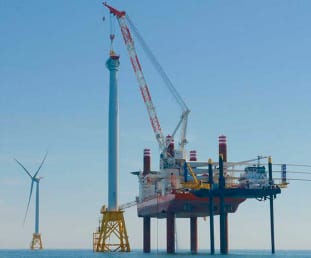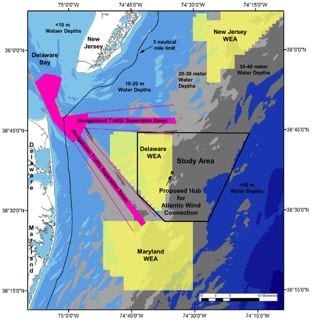Industrializing Offshore Wind Power Generation
How to reduce costs for future offshore wind development? This project showed it is possible to do so by “integrated design,” that is, using combined teams who design the foundation, tower, deployment vessel together. The project developed a cost-optimized, integrated system design of an offshore wind plant.
The complete details of the study and the design are available in the project report, and are illustrated in the above video.

Traditional methods of constructing offshore wind turbines involve the use of expensive jackup vessels, as in the photo to the left, that drive steel piles deep into the seafloor.

The report developed by the project team and its industry partners identified two primary ways to maximize cost savings: use 10-megawatt turbines rather than the 5-megawatt ones that are currently most commonly used, and build almost the entire turbines in port, as shown here, so that the only things that have to be done at sea are installing it in the seafloor with suction buckets and attaching the turbine’s blades. A video explaining the new method is at the top of this page.

Study area shown here. Funded by US Department of Energy as project DE-EE0005484. Participating organizations include Mammoet, Weeks Marine, SPT Offshore, Moffatt & Nichol, EEW, Signal International, CG Power Solutions, Clipper Marine, Saipem, Steel Suppliers Erectors Inc., Universal Foundation/Aalborg University, XKP Visual Engineeers and Atlantic Grid Developers. Willett Kempton is principal investigator for this project; Richard Bowers is the project manager.
Current method of installing offshore wind turbines: cary all the parts to sea separately, use a vessel that jacks up from the sea floor, makes two trips to complete installation, and lifts every separate component into place at sea. This construction animation video is by Siemens of the actual construction process used in Europe.
